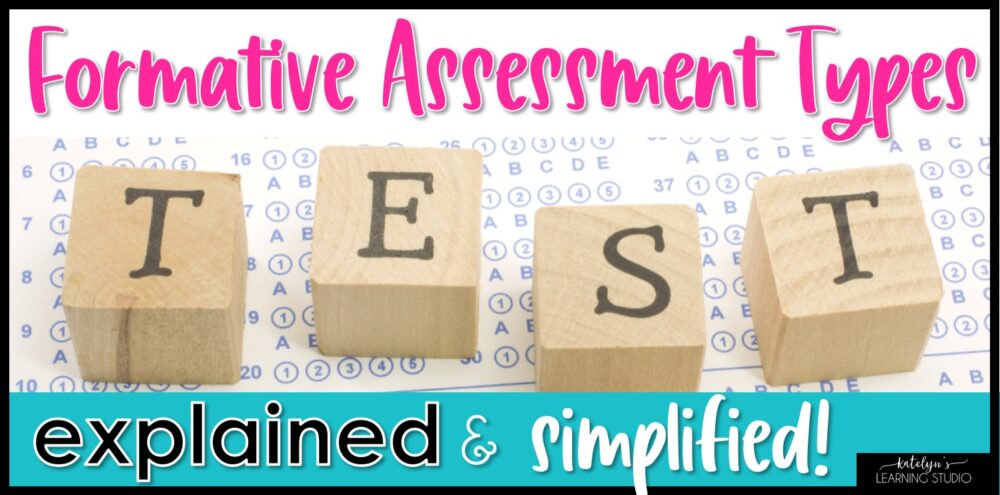
What is formative assessment vs summative, and which formative assessment types are the most effective? How do I progress monitor and track student data? Formative assessment is the number one way to align our instruction with what students need and it is so powerful.
Here are some formative assessment examples and definitions you can use to help tailor your instruction to YOUR students.

This formative assessment types list explains assessment FOR learning and easy ways to make the most of your formative assessments.
Formative assessments are like the secret sauce to teaching. You can have all of the immaculate, detailed lesson plans in the world–- but what really makes the difference is having a teacher that is responsive to the students. That is where the magic happens and instruction is effective because it is tailored to what the student actually needs.
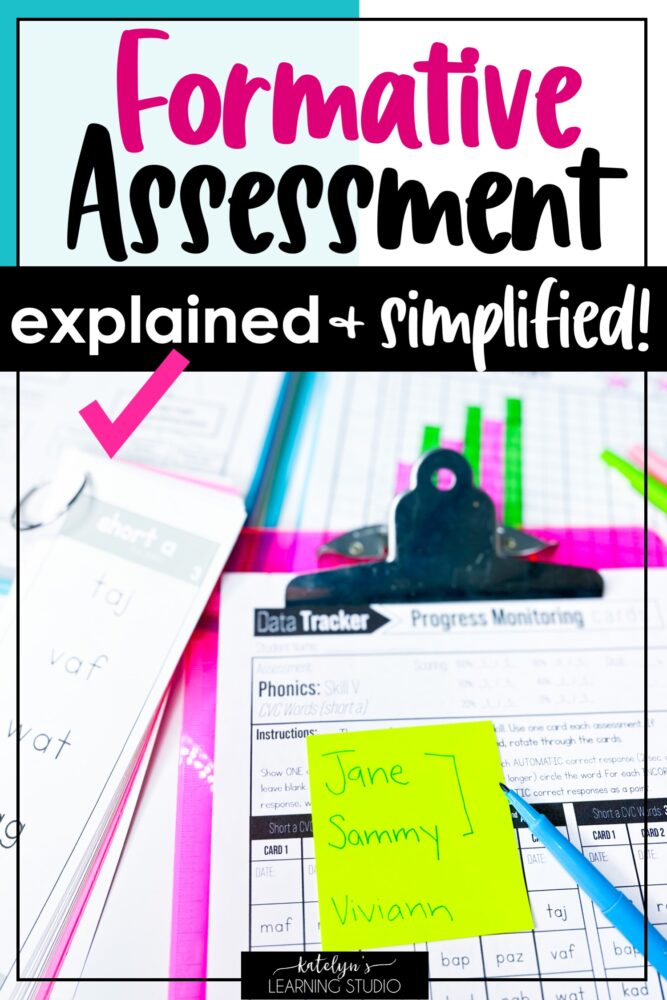
The formative assessment types that will make the biggest difference can still be simple!
There are 2 main types of assessment: formative assessment and summative assessment.
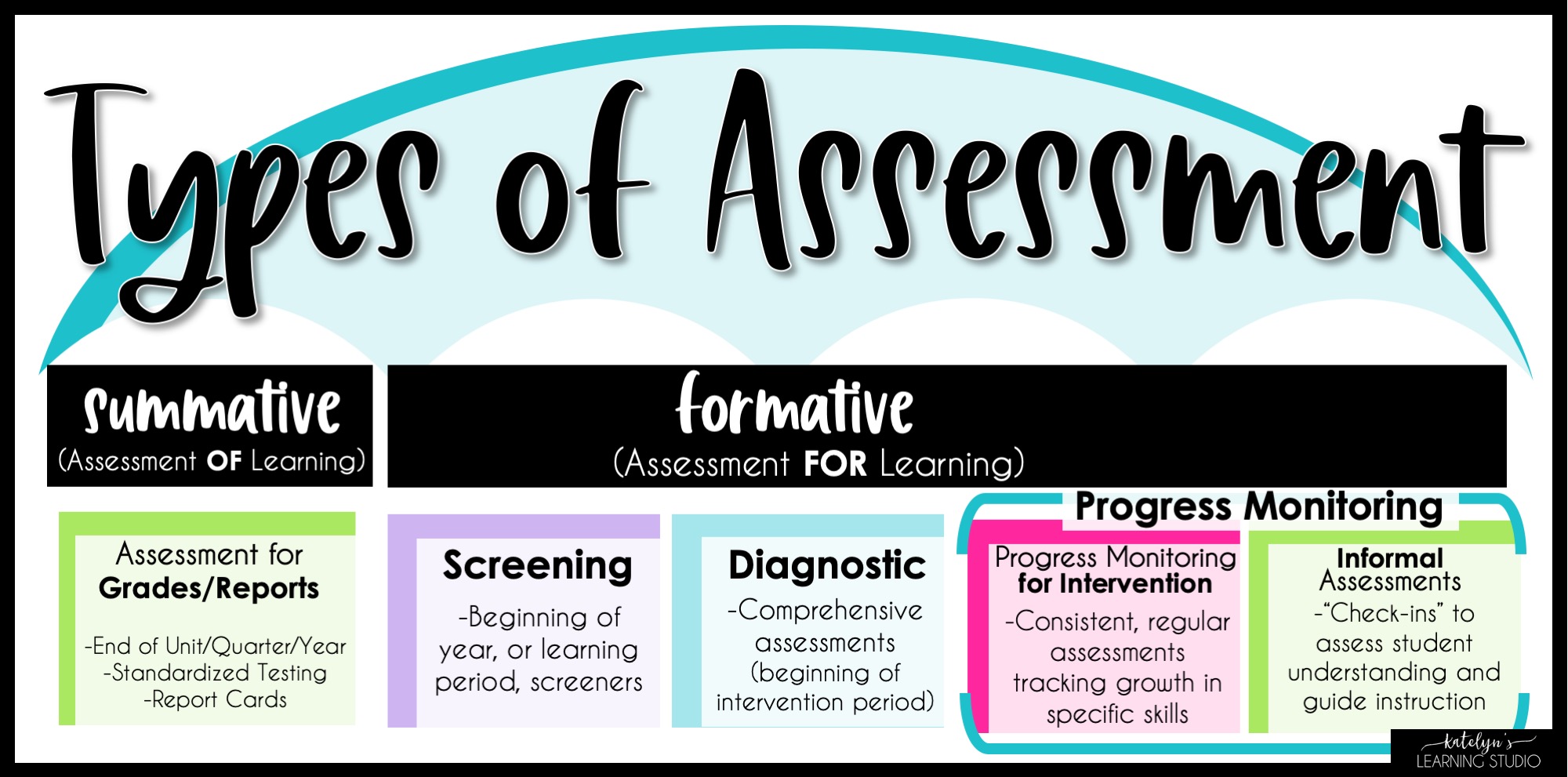
Formative assessment vs summative assessment: what’s the difference?
What is summative assessment?
What is formative assessment?
Think of assessment as one big category split into 2 groups: formative assessment and summative assessment.
THEN, think of “formative assessment” as split into 3 smaller groups.
These smaller groups are the 3 different formative assessment types.
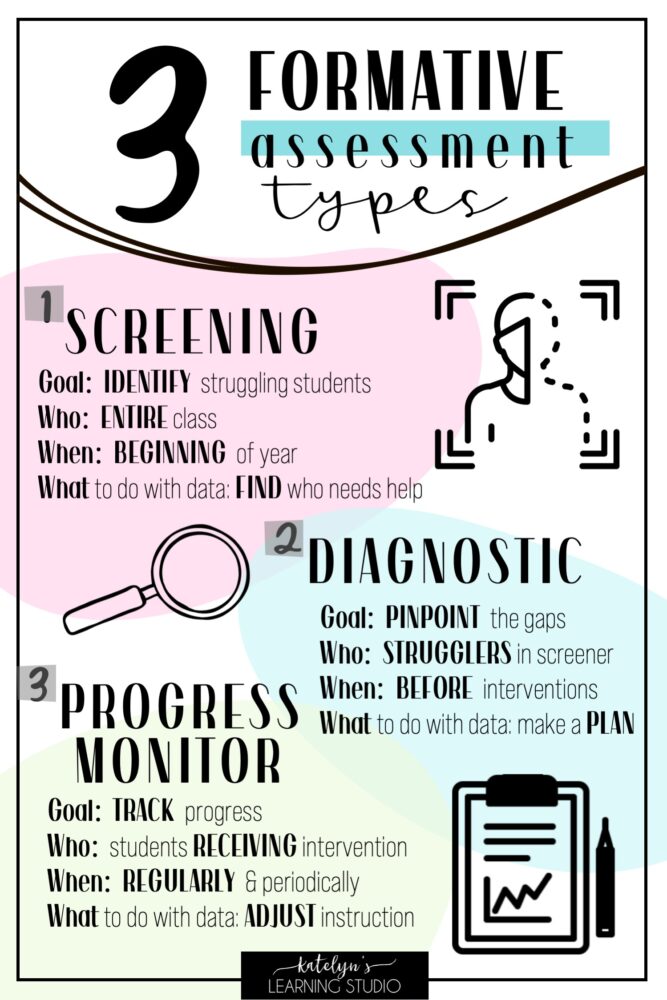
There are different formative assessment types that you can use to positively impact student success.
There are 3 types of formative assessment (plus an extra 4th one):
Which formative assessment type you use depends on what your goal is and who you need to assess.
I pulled the graphic above from my Teacher’s Guide for How to Assess Reading post. It has a lot of information on how to assess each of the Big 5 Areas of Reading.
Goal: Identify any students who are struggling
Who: Assess the entire class
When: At the beginning of a learning period
What to do with data: Find students who are below-level and provide interventions
Goal: Figure out WHERE specifically struggling students have gaps and need intervention
Who: Students you identified in the screener assessment
When: After the screener but before interventions are given
What to do with data: Make a personalized student plan to address any gaps you found
Goal: Track student progress on a specific skill
Who: Students who are receiving intervention
When: Regularly and periodically throughout a learning period
What to do with data: Analyze it to see how you need to adjust instruction (I have a post coming soon about analyzing data!)
Goal: Quickly check student understanding
Who: Whole class or individual students
When: Usually during or right after a lesson
What to do with data: (not always formally recorded)
For screening and diagnostic assessments, I use this Comprehensive Reading Assessment. For progress monitoring, I use this easy Progress Monitoring flip-card system. I’ll dive into informal assessments below!
![]()
Data tracking for formative assessments can give you valuable information when used strategically, like in the tracking sheets that come with these Reading Intervention Binders.
Formative assessments are used in different ways.
Record data for situation #2.
Do not stress about recording data for everything. Because honestly, not all data is equal. And too much data can lead to overwhelm and it’s too hard to glean anything from it then.
In my opinion, if you record every single worksheet/activity/response students do, you will spend all of your time entering numbers and the quality of the data will not always be great anyways.
Instead, collect data several times throughout a learning period using a high-quality, targeted assessment. This will make it easier to ensure the results are reliable and accurate, and lets you zero in on a specific skill. Then analyze THAT data. I’ll have more on how to analyze data soon!
These Reading Intervention Binders make data collection super easy. Each activity in the binder has a matching datasheet you can use to track student progress on reading skills!
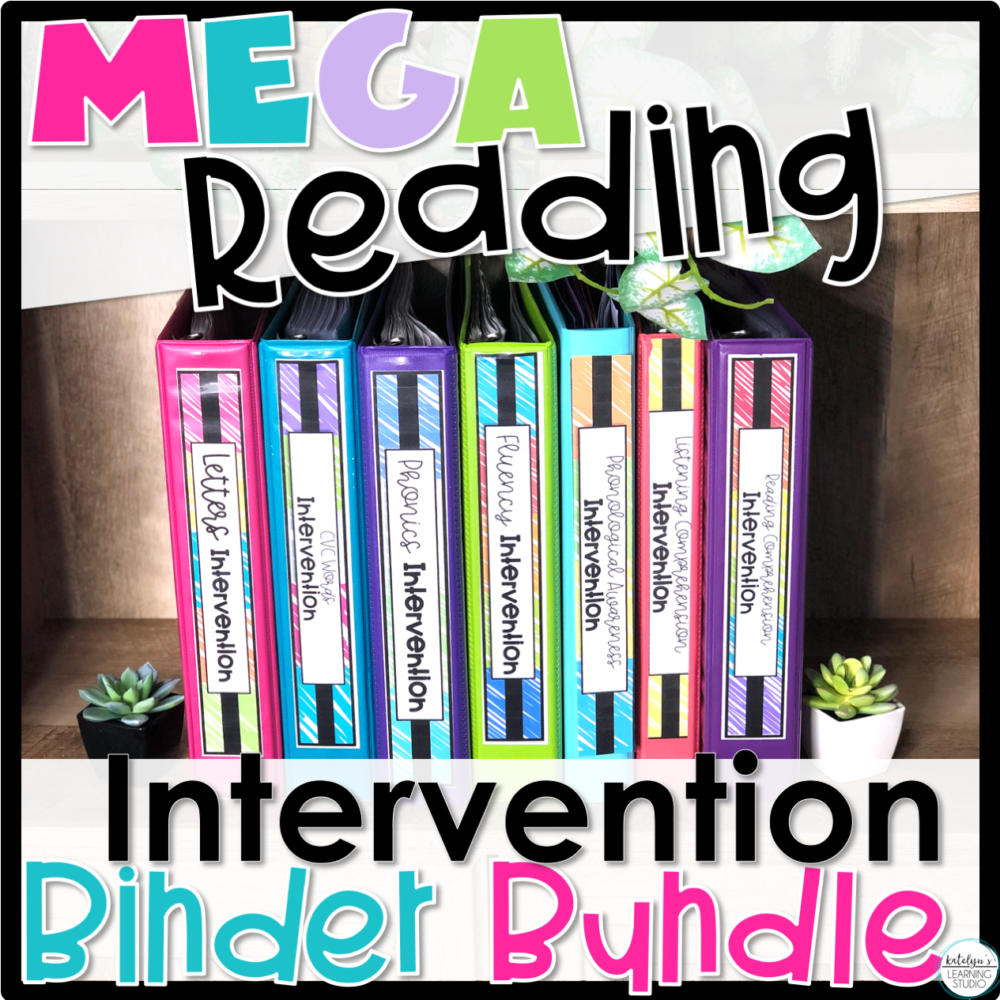
These Reading Intervention Binders help you intervene AND track progress at the same time!

These formative assessment strategies will make your note-taking so much easier! Plus here are a couple of FREE editable note-taking tools (you need to have PowerPoint to download them)!
Note-taking is an important part of making your formative assessments useful, but it’s really hard to complete quickly and keep it organized.
Here are a few easy ways to keep your notes convenient and organized.
CLICK HERE to download some FREE Editable Note-Taking Tools you can use with these strategies! (note: you will need to have PowerPoint to be able to access and download them)
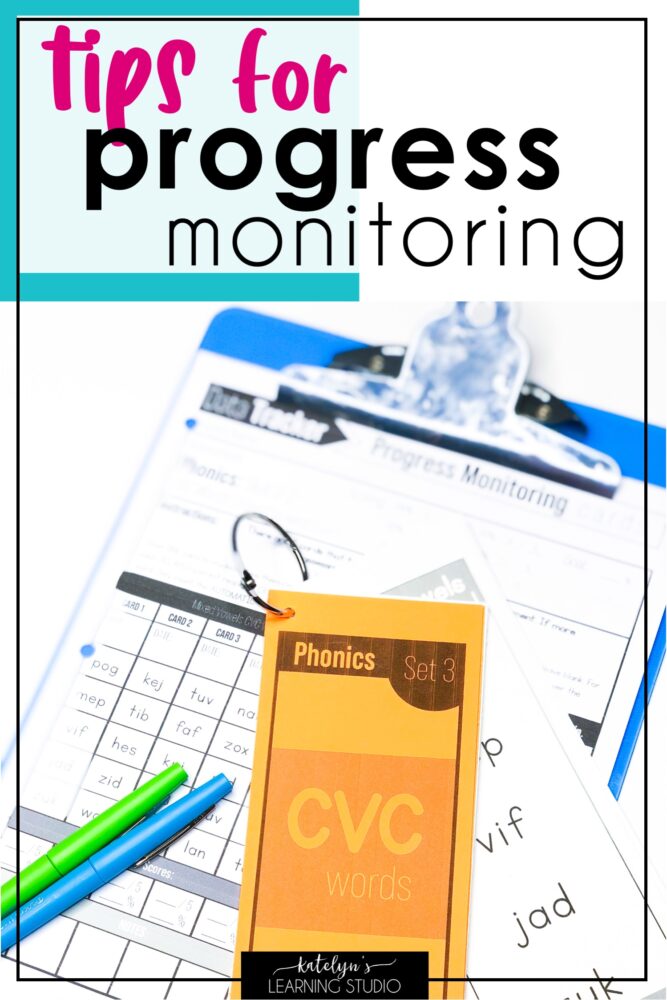
Progress monitoring can be overwhelming, but using a consistent format like these progress monitoring cards can help keep it simple and effective.
When Progress monitoring is used to inform intervention, it needs to be more strategic and organized. It’s important to track the student’s response to intervention so you know if your intervention is working. You also need to show evidence of progress by providing data at IEPs and parent-teacher conferences. Organized and specific data is the perfect way to do that!
Here is a simple free progress monitoring form you can use to easily track student progress in any skill, and a motivating free fluency progress tracker that students love to fill out themselves to track their reading fluency!
When you’re trying to balance a bazillion other things on top of regular and consistent progress monitoring, life can get super stressful. The pressure to do it consistently and to measure the right skill is hard. Here are a few tips to make it easier.
Tips for Easier Progress Monitoring:
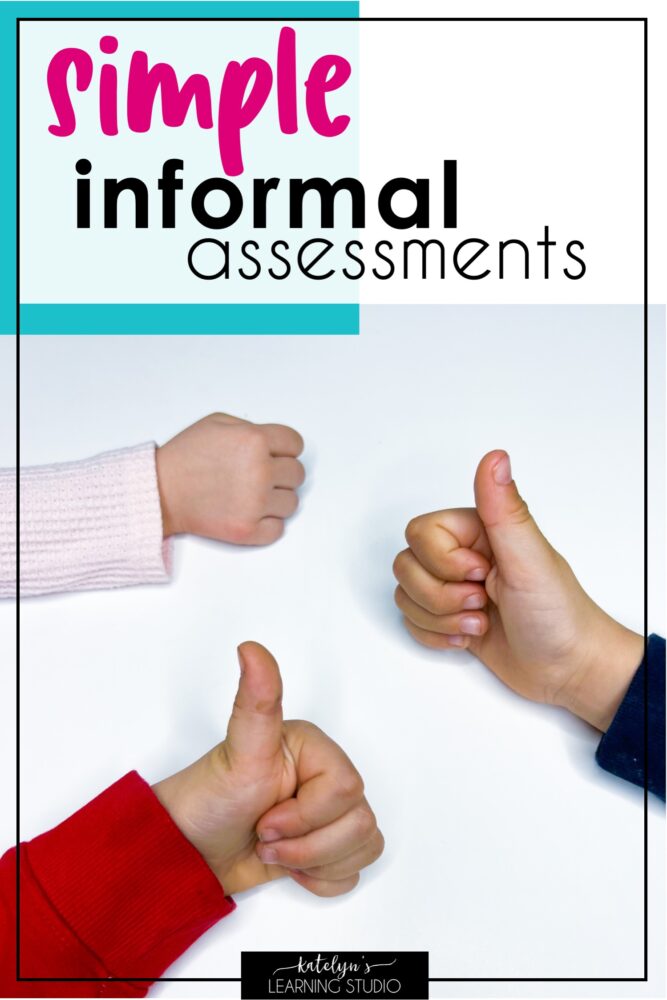
Informal assessment can have so many variations, and can often be quick and easy.
Formative assessment does not have to be intimidating and overwhelming. It can be very simple, and you are most likely already doing it. Informal assessments in particular are very natural and easy to weave into your instruction.
To make the most of your informal assessments, let them INFORM your teaching.
Your traditional “check for understanding” assessments you give during normal classroom lessons are perfect examples of informal assessments. They are for the teacher to use to guide instruction and monitor the entire class. They don’t have to be turned in to anyone and there is often no standardized way to give them (although some teams and schools might align their informal assessments).
Here are some strategies you can use to quickly assess and gather informal data:
*See the next 2 sections for specific ideas of informal assessments!

Formative assessments can be given at multiple points throughout the day.
Here are some formative assessment examples you might use at different points in learning.
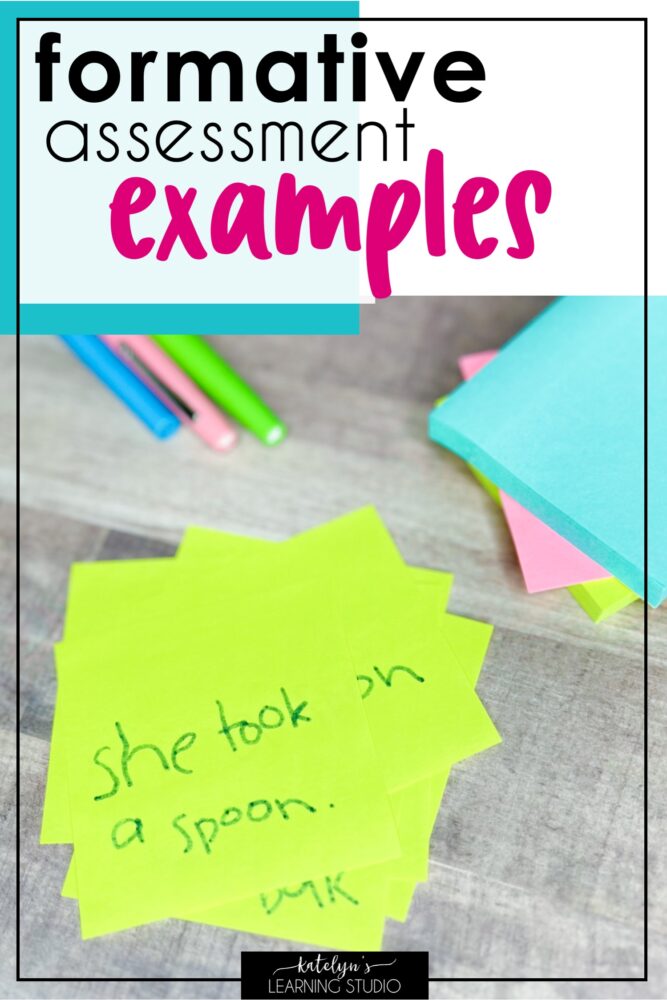
Formative assessment examples can include self-assessment signals, written answers, verbal discussion, or observation.
Real life is busy and chaotic, and sometimes you just need an easy way to monitor progress! These are all examples of practical and easy informal formative assessments that can help you quickly get a gauge and feel for how the class is doing as a whole, and keep an eye on students who might be struggling in that topic.
These are all ideas for assessments that will guide your instruction, but not necessarily monitor individual student progress. For that, you will want to use a more formal progress monitoring system like these progress monitoring flip cards.
With all of this said, formative assessment is only valuable if you are using it ALONGSIDE quality reading intervention. For some quick tips on how to identify student needs and some research-based and targeted reading activities, download this FREE Reading Intervention Cheat Sheet!
You can also check out my Ultimate List of Reading Intervention Activities for tons of hands-on and engaging activities to do with your students.
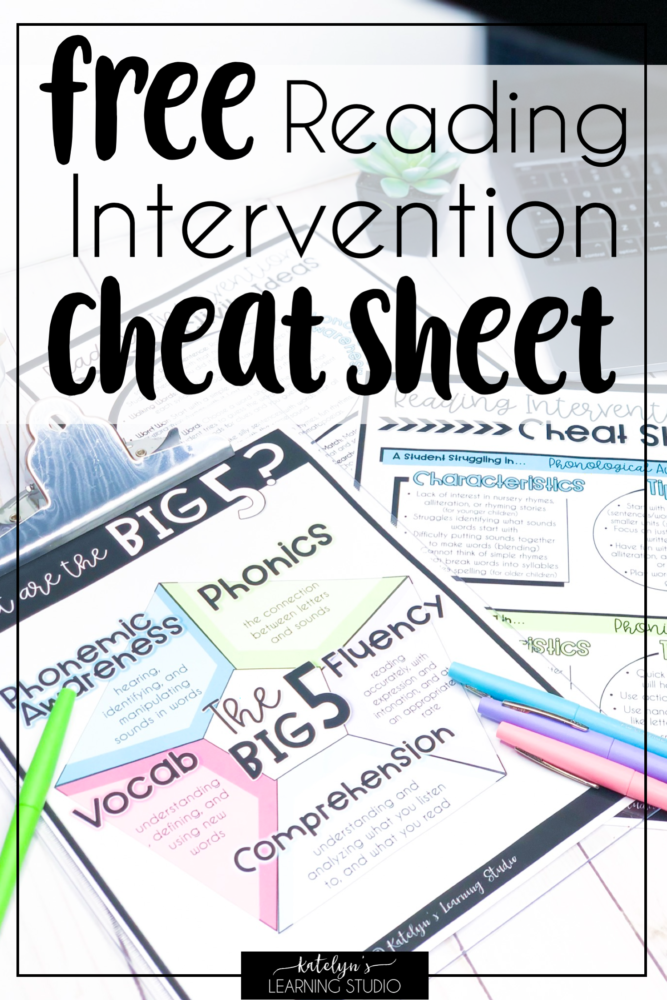
These reading intervention strategies and ideas will help your struggling readers! Click here to download it for free!
Hopefully, these formative assessment examples helped you understand all of the different types of formative assessment and see the value in using formative assessment vs summative. Progress monitoring and informal assessments help you keep a gauge on student learning and adjust your teaching so you are meeting your students’ needs. And they don’t have to be overwhelming! Real-life formative assessments can be quick and simple while still being powerful.